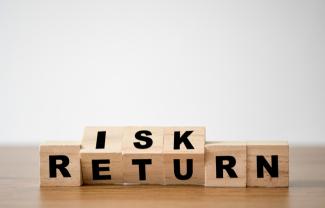
Standard Deviation: How Risky Are Your Investments
We have all heard the phrases “Low Risk, Low Return” and “High Risk, High Return”. Like returns, the risk level of an investment can be measured as a percentage. This is where standard deviations come into the picture. Here we will go over how standard deviation works in investing and what it means for investors.
Standard Deviation in Investing
Standard deviation is normally used in many areas of statistics but for investing, it can be viewed as a simple, statistical measure of an investment’s risk/volatility. While not an absolute metric of risk (many more factors are involved beyond the scope of this blog), you are given an idea of how much the investment’s expected return could stray (or deviate) from its average by simply adding or subtracting the standard deviation from the average return.
Because we are dealing with statistics, standard deviation follows the empirical rule (or the 68-95-99.7 rule). This means that:
- 68% of the time – Investment returns will fall under one standard deviation
- 95% of the time – Investment returns will fall under two standard deviations
- 99.7% of the time – Investment returns will fall under three standard deviations
The higher the number of standard deviations, the wider the range of returns will be. Whereas the lower the number of standard deviations, investment returns will have a more consistent pattern.
For example, if an investment had an average return of 12% and one standard deviation of 4%, this would mean you could see this investment provide returns as high as 16% or as low as 8%. Once we factor in two and three standard deviations (i.e., doubling or tripling the stated standard deviation), the investment with an average return of 12% and a standard deviation of 4%, will look more like:
- 68% of the time – Investment returns will fall between 8% and 16%
- 95% of the time – Investment returns will fall between 4% and 20%
- 99.7% of the time – Investment returns will fall between 0% and 24%
An investment’s standard deviation can give you an idea of the potential range of expected returns of an investment on the modest/common end (8%-16%) or on the extreme/rare end (0%-24%).
Standard Deviation for Investors
Understanding the underlying volatility of an investment can help an investor align their risk tolerance with financial goals. A flaw with this metric is how it may be misinterpreted. Because an investment’s standard deviation is not a relative measure, it cannot be compared to another investment without some context. Comparing an investment with a 4% standard deviation against another investment with a 6% standard deviation does not paint a full picture (as they may not even be in the same asset class).
Conclusion
Considering the standard deviations of various asset classes (US, International, Fixed Income, etc.) can help build a well-diversified portfolio to maximize your overall expected returns to compensate you for the amount of risk you are undertaking. Consulting with a fee-only financial advisor can help you determine the appropriate risk level that aligns with your financial goals.
Weingarten Associates is an independent, fee-only Registered Investment Advisor in Lawrenceville, New Jersey serving Princeton, NJ as well as the Greater Mercer County/Bucks County region. We make a difference in the lives of our clients by providing them with exceptional financial planning, investment management, and tax advice.

